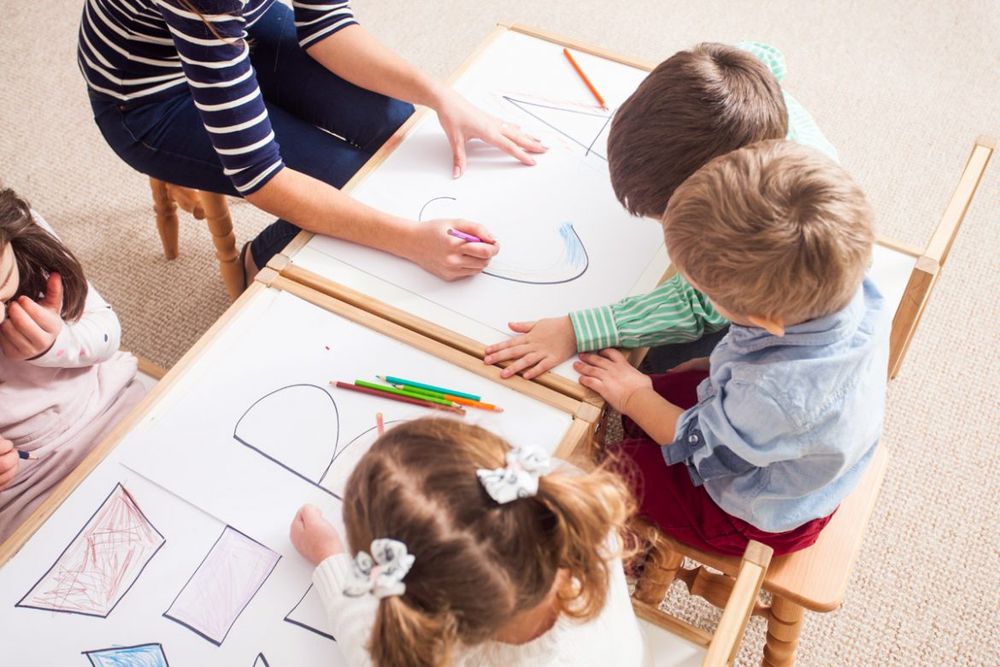Emergent Curriculum - An individualised approach to early learning
Published on Wednesday, 18 September 2019
Last updated on Tuesday, 31 December 2019

Every child has their own strengths, challenges, interests, and ideas. An emergent curriculum allows early childhood educators to focus on the child, respond to their needs, and plan a learning program that’s tailored to them and like-minded peers.
Here, we look at emergent curriculum in more detail and see how this approach can inspire, engage and develop with your child.
How do educators implement an emergent curriculum?
An emergent curriculum is child-led and educator-framed, where educators observe your child and take into account their interests, understandings, and aspirations when planning activities and projects. Instead of being set in stone, these learning programs are flexible and responsive, evolving over time to meet your child’s spontaneous and changing needs.
An emergent curriculum aims to build on your youngster's existing strengths and knowledge, encourage them to think in new ways, and develop a greater understanding of the world, so educators will:
- Get to know your child
- Listen to their thoughts and ideas
- Give them time and space to follow their interests whether individually or in groups
- Look out for key learning opportunities
- Build on your child's previous learning and extend their current interests
Although educators are guided by and responsive to your child, an emergent curriculum does recognise other influences. To help them plan meaningful and relevant learning experiences, educators can also consider:
- Their own interests and priorities as an educator
- Your family's interests and any concerns
- The physical environment at the service
- The social environment
- The values that underpin your child's education and care
An emergent curriculum is child-centric and fluid. Under fives have a say in what they learn, and educators keep pace with their changing interests to actively promote knowledge-building.
How can an emergent curriculum benefit your child?
With a focus on play and tailored learning, this learning approach provides countless opportunities to have fun, learn lots and grow as a person.
Your child will have a chance to:
- Make learning choices, follow their interests, ask questions and wonder about the world
- Take part in exciting, challenging and motivating learning experiences
- Remain focused, engaged and enthusiastic about their learning program
- Express themselves, build language skills and develop their creative abilities
This is all great news, and there are benefits for families too.
As a parent, you'll be encouraged to communicate with educators, and you can be sure that they're thinking carefully about what's best for your child – both at the current time and going forward.
What does an emergent curriculum look like in practice?
Although an emergent curriculum plays out differently in different services, you can expect to see various activities and projects happening in separate classrooms, with children working independently or in small groups, and following their interests.
As an example, Bright Horizons says that a preschool program might involve two side-by-side classrooms, with seven activities:
- In one room, children might be busy making a cardboard car wash, building a complicated block structure, retelling a story from a picture book or writing invites for a birthday party.
- While in the other room, preschoolers could be working out how to angle a ramp to make toy cars go faster, mixing paint colours at an easel or forming blocks of seven in the maths area.
As children's interests change and their learning develops, educators will offer a range of new activities and projects, including some that groups can work on over days or weeks. For instance, preschoolers might find themselves growing a seed in cotton wool and asking things, like 'Where does the water go when you water plants?' or 'How long will it take to sprout?'
An emergent curriculum is a great way to pique your child's interest, keep them engaged and extend their learning, so it might just be the way forward for your little learner.
References
Bright Horizons
ACECQA
Playcentre
QCAA
Related Articles

Hit the creative play button with loose parts
If you've ever seen the magic a child creates with a plain cardboard box, you can start to grasp the idea of 'loose parts' play.

Sensory play in child care
Why sensory play is important and how carers and parents can encourage sensory play in every child's day.

The role of sound play in early childhood services
Why sound is such an integral part of children's development and helps them communicate and learn.
